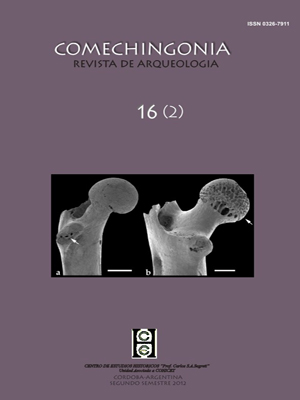Rock art as a geosign of landscape (valley of Yocavil, Catamarca, Argentina)
Main Article Content
Abstract
In this paper I explore the appropriation of living space, involved in the formation of te rritories and landscapes and rock art, which is understood as a system of communication as well as an active element in the construction of these landscapes. From de analisys of the Gruta Grabada de Chiquimí (GCh), a overhang with rock carvings I explore two aspects closely related to life in prehispanic po-pulations who occupied the valley of Yocavil (Catamarca province, Argentine). On the one hand, the GCh is considered as an aesthetic representation related to the worldview of the people involved in its production. On the other hand, analyzed as an active element in the construction of local landscapes, for which a visual and spatial analysis at the landscape scale is developed. I propose that the GCh be considered as geosign, sacred place which embodies the worldview, beliefs and cultural norms of the people who produced it, engaging in an affective relationship with the land and strengthening their identity.
Downloads
Article Details
Section
Artículos
COPYLEFT
This work is licensed under a Creative Commons Attribution-Share Alike 4.0 International License.
COPYRIGTH
The copyright and copyrights of the articles are held by the authors themselves.
This will be indicated in each article, as well as the Copyleft license described above.
How to Cite
Rock art as a geosign of landscape (valley of Yocavil, Catamarca, Argentina). (2012). Comechingonia. Revista De Arqueología, 16(2), 31-54. https://doi.org/10.37603/2250.7728.v16.n2.17988




